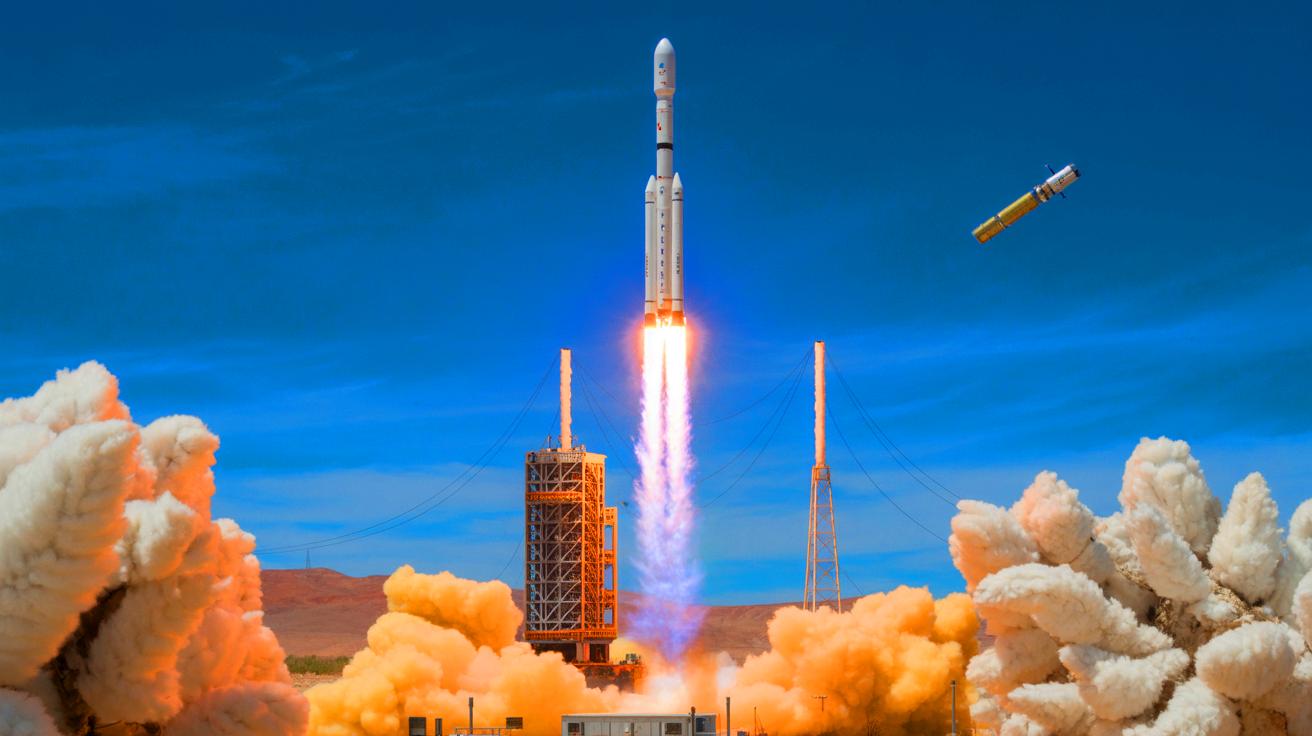IN A NUTSHELL
🚀 China launched two Mexican femtosatellites into orbit, marking a new era of international space collaboration.
🌎 The launch highlights Mexico’s entry into the commercial space market with its first mission to low Earth orbit.
📡 The mission showcases the potential of small satellite technology, challenging traditional satellite norms.
🔗 This collaboration underscores China’s growing influence in global space efforts, expanding its international partnerships.
In a groundbreaking collaboration, China and Mexico have embarked on a significant venture in space technology. China has successfully launched two Mexican satellites into orbit, marking a new chapter in North American space initiatives. This development not only emphasizes the growing international partnerships in space exploration but also highlights the shift towards smaller and more efficient satellite technologies. The launch was carried out by CAS Space, a Beijing-based company, using its Kinetica-1 rocket. The initiative is part of China’s broader strategy to expand its influence in the global commercial space market, while for Mexico, it represents a stride towards becoming a notable player in the aerospace sector.
Mexico’s Leap Into Space
Mexico has joined the ranks of North American countries engaging in orbital missions with the recent launch of two satellites. These satellites, developed by the Tijuana-based company ThumbSat, were launched by China’s CAS Space. Situated close to the U.S. border, ThumbSat is pioneering the concept of femtosatellites—tiny satellites that weigh less than 100 grams. This launch is a monumental step as it marks Mexico’s first commercial mission to low Earth orbit.
The ThumbSat satellites are designed for specific missions. ThumbSat-1 is equipped with a selfie payload, while ThumbSat-2 carries an artistic payload. These missions emphasize the potential of small satellites to perform meaningful tasks. The company aims to make space more accessible by installing low-cost receiving stations across Mexico. These stations will empower students and amateur users to interact with the satellites, thus democratizing space technology.
China’s Growing Influence in Space
The involvement of CAS Space in this project underscores China’s growing role in the international space community. Offering a “good balance of cost and reliability,” CAS Space’s Kinetica-1 rocket has attracted international interest for its commercial launch capabilities. This launch is significant as it marks China’s entry into the North American commercial launch market, a region traditionally dominated by U.S. space agencies and companies.
China’s strategy involves expanding its space cooperation worldwide, and this launch with Mexico is a testament to that goal. By collaborating with countries like Mexico, China is not only extending its technological reach but also fostering diplomatic ties. These collaborations could potentially reshape global dynamics in space exploration, as more countries look to China for affordable and reliable launch services.
The Technology Behind Femtosatellites
The ThumbSat mission is a pivotal demonstration of the capabilities of femtosatellites. These tiny devices challenge the traditional notion that satellites must be large and costly to be effective. The technology behind these satellites allows them to carry out specific tasks despite their size. This is achieved through advanced miniaturization techniques and innovative engineering solutions.
The satellites were equipped with a custom-built separation deployer, courtesy of CAS Space, designed for modular upgrades and future scalability. This technology ensures that even as satellite requirements evolve, the existing framework can adapt, allowing for continued innovation and application. This approach not only reduces costs but also promotes sustainability in the ever-growing field of satellite technology.
Implications for Global Space Collaboration
This collaboration between China and Mexico has far-reaching implications for global space collaboration. By working together, the two nations have highlighted the potential for international partnerships to advance space exploration. This trend could lead to increased cooperation among nations, breaking down barriers that have historically limited access to space.
As space becomes more accessible, countries previously unable to participate in space missions now have opportunities to engage in space exploration. This democratization of space could lead to a more diverse range of missions and technological advancements, benefiting the global community. The success of the ThumbSat mission may inspire other countries to pursue similar collaborations, fostering a new era of international cooperation.
The launch of Mexican satellites by China’s CAS Space is a significant milestone in the evolving landscape of global space exploration. This collaboration not only showcases the potential of small satellite technology but also signifies a shift towards more inclusive and international partnerships in space. As more countries explore similar alliances, the future of space exploration seems poised for unprecedented growth and cooperation. How will these new dynamics reshape the future of space exploration, and what role will emerging technologies play in this transformative journey?
This article is based on verified sources and supported by editorial technologies.
Did you like it? 4.5/5 (25)

